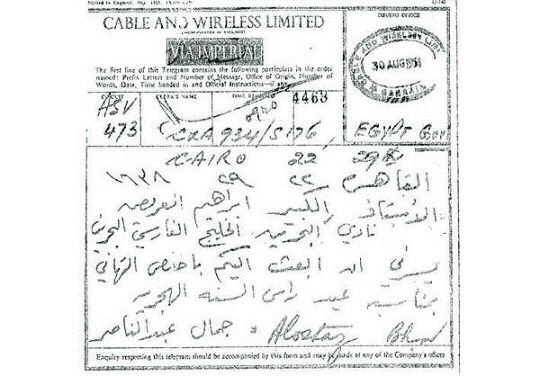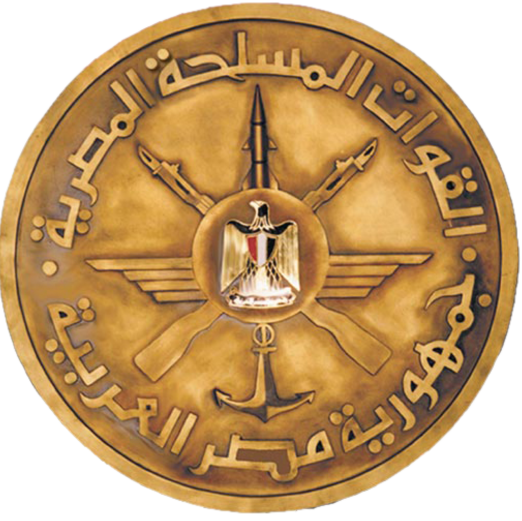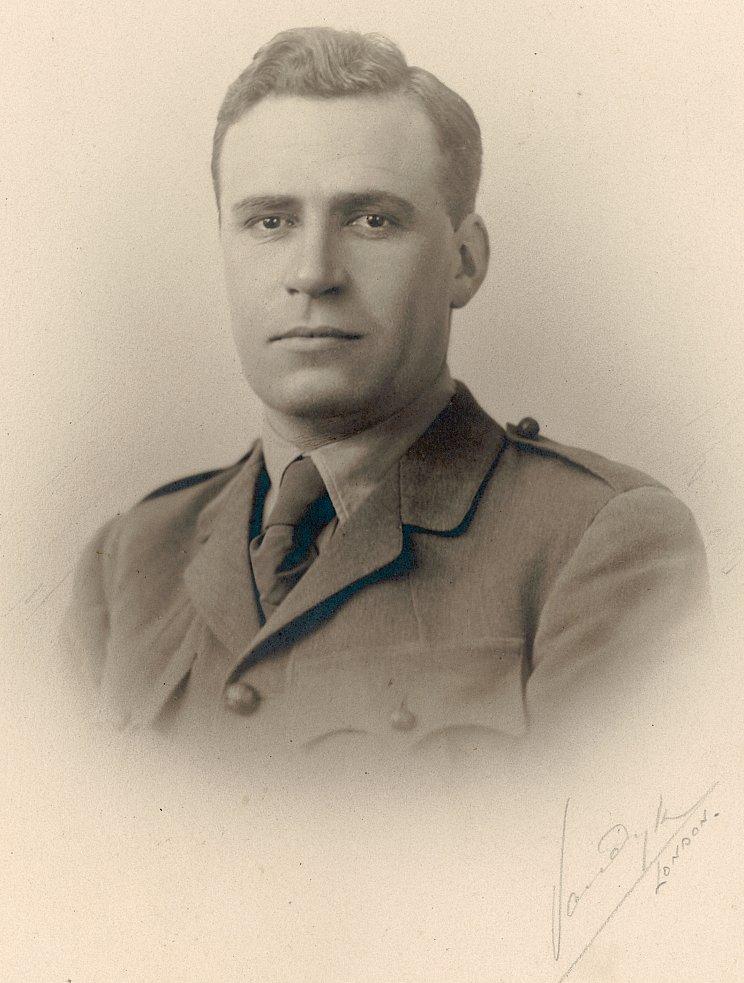|
Charles Belgrave
Sir Charles Dalrymple Belgrave KBE (9 December 1894 – 28 February 1969) was a British citizen and advisor to the rulers of Bahrain from 1926 until 1957, as "Chief Administrator" or "adviserate". He first served under Shaikh Hamad ibn Isa Al Khalifa, and subsequently under his son, Shaikh Salman. Early life Belgrave was educated at Bedford School and Lincoln College, Oxford. During World War I he served in the Imperial Camel Corps, in Sudan, Egypt and Palestine. In 1915 he was a member of the Darfur Expedition, for which he was awarded the Sudan Medal and Clasp. After the war he was seconded to the Egyptian Government to help the frontier districts administration in the Siwa Oasis. He was an Administrative Officer in Tanganyika Territory in 1924–25. Belgrave's great-grandfather was Admiral James Richard Dacres who commanded HMS Guerriere as a captain in 1812. Recruitment by Bahrain In the early 1920s the British in Bahrain were concerned to secure the political stability ... [...More Info...] [...Related Items...] OR: [Wikipedia] [Google] [Baidu] |
Order Of The British Empire
The Most Excellent Order of the British Empire is a British order of chivalry, rewarding contributions to the arts and sciences, work with charitable and welfare organisations, and public service outside the civil service. It was established on 4 June 1917 by King George V and comprises five classes across both civil and military divisions, the most senior two of which make the recipient either a knight if male or dame if female. There is also the related British Empire Medal, whose recipients are affiliated with, but not members of, the order. Recommendations for appointments to the Order of the British Empire were originally made on the nomination of the United Kingdom, the self-governing Dominions of the Empire (later Commonwealth) and the Viceroy of India. Nominations continue today from Commonwealth countries that participate in recommending British honours. Most Commonwealth countries ceased recommendations for appointments to the Order of the British Empire when they ... [...More Info...] [...Related Items...] OR: [Wikipedia] [Google] [Baidu] |
Tanganyika (territory)
Tanganyika was a colonial territory in East Africa which was administered by the United Kingdom in various guises from 1916 to 1961. It was initially administered under a military occupation regime. From 20 July 1922, it was formalised into a League of Nations mandate under British rule. From 1946, it was administered by the UK as a United Nations trust territory. Before World War I, Tanganyika formed part of the German colony of German East Africa. It was gradually occupied by forces from the British Empire and Belgian Congo during the East Africa Campaign, although German resistance continued until 1918. After this, the League of Nations formalised the UK's control of the area, who renamed it "Tanganyika". The UK held Tanganyika as a League of Nations mandate until the end of World War II after which it was held as a United Nations trust territory. In 1961, Tanganyika gained its independence from the UK as Tanganyika. It became a republic a year later. Tanganyika now forms pa ... [...More Info...] [...Related Items...] OR: [Wikipedia] [Google] [Baidu] |
Sawt Al-Bahrain
''Sawt al-Bahrain'' (Arabic: ''The Voice of Bahrain'') was a monthly political magazine published in Manama, Bahrain, between 1950 and 1954. It was the first independent publication by the Bahraini intellectuals. The magazine laid the basis for the High Executive Committee (Arabic: al-Hay'a al-Tanfidhiyya al-Uliya) which was a cross-sectarian nationalist political movement in Bahrain founded in 1955 and inspired other publications including ''Al Isha'' which was a cultural journal. History and profile ''Sawt al-Bahrain'' was launched by the progressive Arab nationalist intellectuals in 1950. The idea to start a publication first emerged in 1949 during a meeting of the political activists led by Abdul Rahman Al Bakir. The headquarters of ''Sawt al-Bahrain'' was in Manama, and it was published on a monthly basis. The magazine was circulated in the Gulf countries and read by people with progressive ideas in distinct places, including Gulf cities, Riyadh, Mecca, Medina, Cairo, Iraq ... [...More Info...] [...Related Items...] OR: [Wikipedia] [Google] [Baidu] |
Persian Gulf Naming Dispute
The Persian Gulf naming dispute is concerned with the name of the body of water known historically and internationally as the Persian Gulf, after Persia (the Western exonym for Iran). This name has become contested by some Arab countries since the 1960s in connection with the emergence of pan-Arabism and Arab nationalism, resulting in the invention of the toponym "Arabian Gulf" ( ar, الخليج العربي) as well as the "Gulf", which are terms used in some Arab countries. Overview This body of water was referred to as the Persian Gulf by Arab historians and geographers, including the Arab Christian writer Agapius, writing in the 10th century. According to authors Philip L. Kohl, Mara Kozelsky, and Nachman Ben-Yehuda in their work ''Selective Remembrances'', Sir Charles Belgrave (British adviser to the ruler of Bahrain) was "the first westerner to use and advocate the name 'Arabian gulf', first in the journal ''Soat al-Bahrain'' (''Voice of Bahrain'') in 1955." Mahan Ab ... [...More Info...] [...Related Items...] OR: [Wikipedia] [Google] [Baidu] |
Gamal Abdel Nasser
Gamal Abdel Nasser Hussein, . (15 January 1918 – 28 September 1970) was an Egyptian politician who served as the second president of Egypt from 1954 until his death in 1970. Nasser led the Egyptian revolution of 1952 and introduced far-reaching land reforms the following year. Following a 1954 attempt on his life by a Muslim Brotherhood member, he cracked down on the organization, put President Mohamed Naguib under house arrest and assumed executive office. He was formally elected president in June 1956. Nasser's popularity in Egypt and the Arab world skyrocketed after his nationalization of the Suez Canal Company and his political victory in the subsequent Suez Crisis, known in Egypt as the ''Tripartite Aggression''. Calls for pan-Arab unity under his leadership increased, culminating with the formation of the United Arab Republic with Syria from 1958 to 1961. In 1962, Nasser began a series of major socialist measures and modernization reforms in Egypt. Despite setba ... [...More Info...] [...Related Items...] OR: [Wikipedia] [Google] [Baidu] |
The Blade (Toledo)
''The Blade'', also known as the ''Toledo Blade'', is a newspaper in Toledo, Ohio published daily online and printed Thursday and Sunday by Block Communications. The newspaper was first published on December 19, 1835. Overview The first issue of what was then the ''Toledo Blade'' was printed on December 19, 1835. It has been published daily since 1848 and is the oldest continuously run business in Toledo. David Ross Locke gained national fame for the paper during the Civil War era by writing under the pen name Petroleum V. Nasby. Under this name, he wrote satires ranging on topics from slavery, to the Civil War, to temperance. President Abraham Lincoln was fond of the Nasby satires and sometimes quoted them. In 1867 Locke bought the ''Toledo Blade''. The paper dropped "Toledo" from its masthead in 1960. In 2004 ''The Blade'' won the Pulitzer Prize for Investigative Reporting with a series of stories entitled "Buried Secrets, Brutal Truths". The story brought to light the stor ... [...More Info...] [...Related Items...] OR: [Wikipedia] [Google] [Baidu] |
Australian Associated Press
Australian Associated Press (AAP) is an Australian news agency. It was established by Keith Murdoch in 1935. AAP employs around 80 journalists who work in bureaus in all states and territories of Australia except the Northern Territory. It also maintains correspondents in New Zealand and London as well as using a network of contributors from the US, Europe, Asia and Africa. AAP's domestic news coverage is complemented by alliances with the major international news agencies. AAP's main focus is on breaking news but is also known for its court reporting, sport, political coverage, feature stories, and photographs. It also produces video and visual explainers. AAP is one of the few remaining non-government newswires in the world. History Australia was first linked to international telegraph services by a submarine cable that linked Java to Darwin, which was laid by the British-Australian Telegraph Company, and completed on 18 November 1871. The Eastern states were connected thr ... [...More Info...] [...Related Items...] OR: [Wikipedia] [Google] [Baidu] |
The Age
''The Age'' is a daily newspaper in Melbourne, Australia, that has been published since 1854. Owned and published by Nine Entertainment, ''The Age'' primarily serves Victoria (Australia), Victoria, but copies also sell in Tasmania, the Australian Capital Territory and border regions of South Australia and southern New South Wales. It is delivered both in print and digital formats. The newspaper shares some articles with its sister newspaper ''The Sydney Morning Herald''. ''The Age'' is considered a newspaper of record for Australia, and has variously been known for its investigative reporting, with its journalists having won dozens of Walkley Awards, Australia's most prestigious journalism prize. , ''The Age'' had a monthly readership of 5.321 million. History Foundation ''The Age'' was founded by three Melbourne businessmen: brothers John and Henry Cooke (who had arrived from New Zealand in the 1840s) and Walter Powell. The first edition appeared on 17 October 1854. ... [...More Info...] [...Related Items...] OR: [Wikipedia] [Google] [Baidu] |
National Union Committee
The National Union Committee ( ar, هيئة الاتحاد الوطني) was a nationalist reformist political organization formed in Bahrain in 1954 (originally named the ''Higher Executive Committee'', ar, الهيئة التنفيذية العليا). The committee was formed by reformists in response to sectarian clashes between Sunni and Shia members of the population. Its foundations were laid in the journal, ''Sawt al-Bahrain'', which was founded and published by these reformist figures. The original aims were to push for an elected popular assembly, a codified system of civil and criminal law, the establishment of an appellate court, the right to form trade unions, an end to British colonial influence (through the removal of Charles Belgrave), and an end to sectarianism. The original committee was made up of four Sunni representatives and four Shi'i representatives. The members were: * Abdul Rahman Al Bakir ( ar, عبدالرحمن الباكر) - Secretary * Abdulaziz ... [...More Info...] [...Related Items...] OR: [Wikipedia] [Google] [Baidu] |
Selwyn Lloyd
John Selwyn Brooke Lloyd, Baron Selwyn-Lloyd, (28 July 1904 – 18 May 1978) was a British politician. Born and raised in Cheshire, he was an active Liberal as a young man in the 1920s. In the following decade, he practised as a barrister and served on Hoylake Urban District Council, by which time he had become a Conservative Party sympathiser. During the Second World War he rose to be Deputy Chief of Staff of Second Army, playing an important role in planning sea transport to the Normandy beachhead and reaching the acting rank of brigadier. Elected to Parliament in 1945 as a Conservative, he held ministerial office from 1951, eventually rising to be Foreign Secretary under Prime Minister Anthony Eden from April 1955. His tenure coincided with the Suez Crisis, for which he at first attempted to negotiate a peaceful settlement, before reluctantly assisting with Eden's wish to negotiate collusion with France and Israel as a prelude to military action. He continued as Foreign Sec ... [...More Info...] [...Related Items...] OR: [Wikipedia] [Google] [Baidu] |
The New York Times
''The New York Times'' (''the Times'', ''NYT'', or the Gray Lady) is a daily newspaper based in New York City with a worldwide readership reported in 2020 to comprise a declining 840,000 paid print subscribers, and a growing 6 million paid digital subscribers. It also is a producer of popular podcasts such as '' The Daily''. Founded in 1851 by Henry Jarvis Raymond and George Jones, it was initially published by Raymond, Jones & Company. The ''Times'' has won 132 Pulitzer Prizes, the most of any newspaper, and has long been regarded as a national " newspaper of record". For print it is ranked 18th in the world by circulation and 3rd in the U.S. The paper is owned by the New York Times Company, which is publicly traded. It has been governed by the Sulzberger family since 1896, through a dual-class share structure after its shares became publicly traded. A. G. Sulzberger, the paper's publisher and the company's chairman, is the fifth generation of the family to head the pa ... [...More Info...] [...Related Items...] OR: [Wikipedia] [Google] [Baidu] |
Pith Helmet
The pith helmet, also known as the safari helmet, salacot, sola topee, sun helmet, topee, and topi) is a lightweight cloth-covered helmet made of sholapith. The pith helmet originates from the Spanish Empire, Spanish military adaptation of the native ''salakot'' headgear of the Philippines. It was often worn by European travellers and explorers, in the varying climates found in Southeast Asia, Africa, and the tropics, but was also used in many other contexts. It was routinely issued to European military personnel serving overseas in hot climates from the mid-nineteenth to the mid-twentieth century. Definition Typically, a pith helmet derives from either the sola plant, ''Aeschynomene aspera'', an Indian swamp plant, or from ''Aeschynomene paludosa''. In the narrow definition, a pith helmet is technically a type of sun helmet made out of pith material. However, the pith helmet may more broadly refer to the particular style of helmet. In this case, a pith helmet can be made out o ... [...More Info...] [...Related Items...] OR: [Wikipedia] [Google] [Baidu] |







.png)
